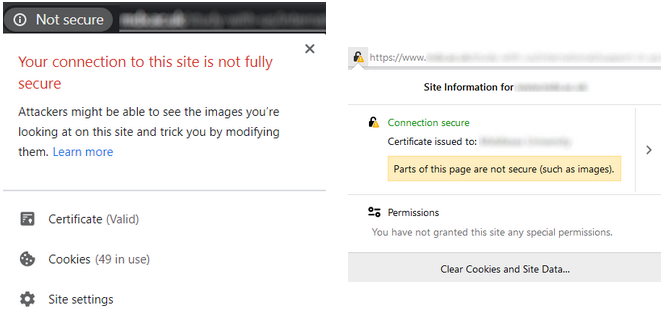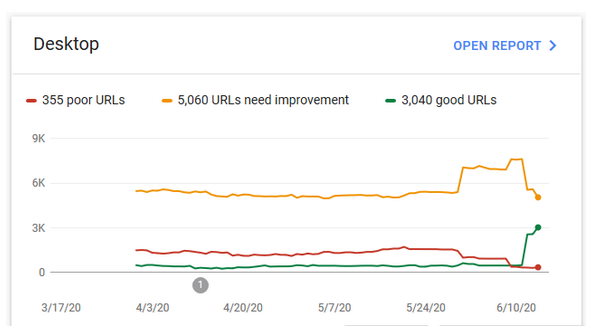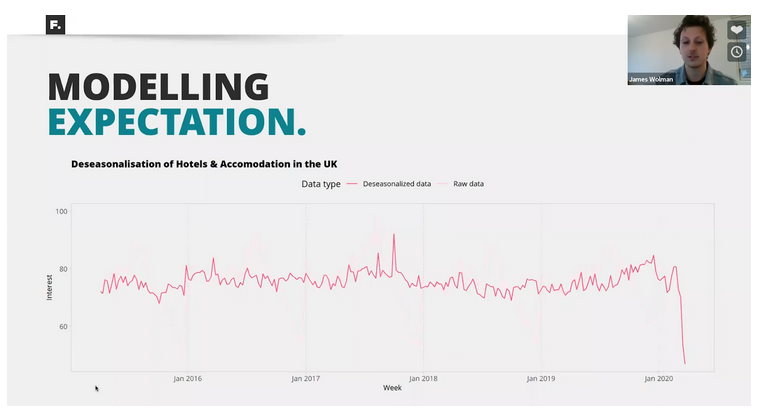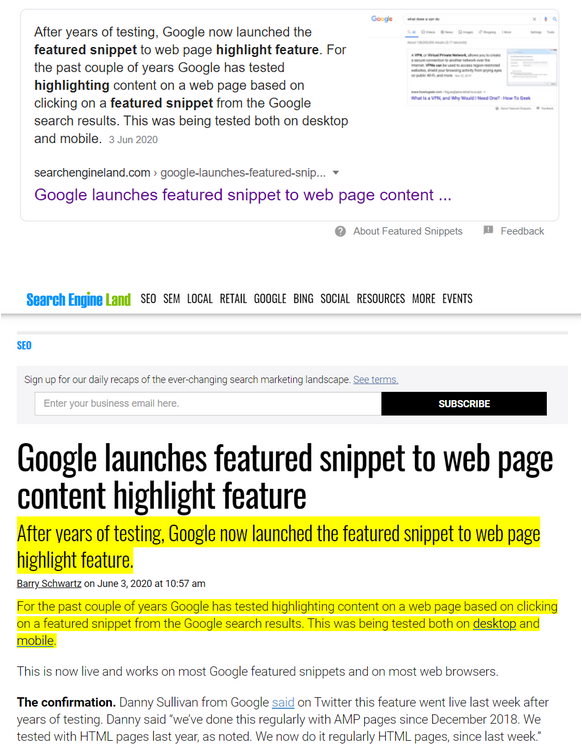Search engine algorithms and features change on a near daily basis, indeed Google announced that they made more than 3,200 to their “search systems” in a recent year. The vast majority of these Google updates won’t have any significant measurable impact on a sites’ organic search performance, however since 2019 we have seen more significant “Core algorithm updates” roll out approximately quarterly, the most recent being at the start of last month.
As Google tries to get better at answering search needs be this by returning a list of websites or surfacing an answer directly on the results page.
Despite these changes the fundamentals of SEO remain constant: Ensure an efficiently accessible site, offer a good user experience through the provision of informative value-adding content and demonstrate your authority and credibility in the space.
In such a fast-moving environment it can be difficult to keep track of the changes which a site can practically take advantage of and have the ability to move the performance needle. In this article I’ve taken a look at recent changes in the SEO landscape which may affect your approach or prioritisation to optimisation.
Crawling
Evolution of the “Nofollow” link attribute
Last September Google announced that they were introducing two additional HTML link attribute values to complement the existing widely supported rel=”nofollow”.
Much of the focus at the time was on the introduction of two newly introduced value which could be used to provide additional link context: rel=”ugc”, used to denote that a link exists within a publicly editable field such as a forum post or blog comment; rel=”sponsored”, used to denote a paid link from within a sponsored post.
However the main implication is that whilst rel=”nofollow” originally acted as a “catch all” to prevent search engines following a particular link or associating the source and destination pages, since March 2020 this has no longer been the case. Google may follow and evaluate nofollow links and use them as ranking signals.
“All the link attributes — sponsored, UGC and nofollow — are treated as hints about which links to consider or exclude within Search.” – https://webmasters.googleblog.com/2019/09/evolving-nofollow-new-ways-to-identify.html
This means that sites with higher quality inbound links containing the nofollow attribute may now receive ranking benefits from such links.
What to do?
If you were previously focusing your off-site efforts purely on sites which offered ‘followed’ links you may wish to reevaluate your approach as “nofollow” links may now pass value. This may particularly affect targeting of major newspaper websites many which use a blanket “nofollow” rule on all external link
Unsupported Robots.txt Directives
In September 2019 Google removed support for unofficial directives within robots.txt files. This meant that some directives which formerly controlled crawling and indexation behaviour would no longer be respected.
At the time we had a small number of clients making use of the unofficial “Noindex:” directive to prevent pages appearing in search results. Alternative methods such as meta robots noindex and password protection of directories had to be implemented in order to prevent previous non-indexed content entering.
What to do?
- Review your robots.txt file and ensure you are only using directives which are contained within the Robots Exclusion Protocol draft.
- If you previously relied on the robots.txt Noindex directive to prevent context becoming indexed, review the Coverage report within Google Search Console to ensure low quality pages are not appearing in the index.
- If you are using any unsupported commands confirm if the requested behaviour is still desired and if so replace with a standards-compliant equivalent.
Experience
Treatment of Mixed Content
Use of the HTTPS protocol is important for many reasons including data security, trust and performance optimisations and has been a confirmed Google ranking factor dating back to 2014. 6 years later HTTPS adoption has increased greatly accounting for between around 90% of web traffic, however some sites still have shortcomings in their implementation.
Mixed content refers to secure (HTTPS) webpages which load additional content over non-secure (HTTP) URLs. This additional content typically consists of image, CSS or JavaScript files used to build a webpage.
In a post on the Google Security blog in October 2019 it was announced that Chrome will eventually block all non-secure content loaded as part of secure pages. Their intention is to auto-upgrade references of affected files to HTTPS so providing resources are available at secure URL variants user experience should not be affected.
However, in the meantime there is a more practical concern: Use of mixed content invalidates SSL certificates and browsers may show warning messages to your visitors. This means pages which formerly appeared as “secure” may now be prominently flagged in browsers as “Not secure” with a knock on effect on user trust and conversion.

Addressing these issues is no longer as straightforward as simply checking all the resources files directly referenced from your site. JavaScript and CSS files often reference additional resources and any time one of these resources is referenced at an insecure URL a warning will show.
In our experience the majority of instances have occurred as a result of clients using third-party themes or plugins which do not enforce HTTP on directly or indirectly referenced resources.
What to do?
- Audit all your resource file references to ensure no requests are made to load non-HTTPS resources
- Utilise sites such as Why No Padlock? to diagnose the cause of any browser-based HTTPS certificate warnings
- Ensure all first-party and third-party reference to non-secure resources are updated.
Core Web Vitals
Core Web Vitals is a new report accessible in Google Search Console which replaces the former “Speed” report which reflects the real-world experience of visitors to a webpage. The majority of Web Vital metrics relate to the speed at which a page loads, becomes interactive and becomes stable however Google has stated that these metrics will evolve over time.
These have always been important considerations however Google’s switch to more consistent reporting across its platforms using real world user data taken from the Chrome User Experience Report ensures there are now metrics to focus on optimising ahead of their inclusion as a ranking factor in 2021.

What to do?
- With a promise to announce any changes 6-months ahead of inclusion in ranking algorithms webmasters have been given significant notice of any impending change suggesting that it may have a significant impact. You should act now to optimise against the Core Web Vital metrics to ensure you are prepared well ahead of time.
- Our SEO Account Imogen has created a Core Web Vitals Guide providing more background information, practical use cases and detailing specific actions to take.
Behaviour
Search behaviour is always evolving which is one reason why it’s important to regularly refresh to your understanding of the search landscape and and evaluate whether your site effectively addresses audience needs
Rapid changes in search behaviour
As a result of the Covid-19 pandemic the worlds’ behaviour has changed dramatically, including the things we search for. We have seen fast moving shifts in consumer behaviour outside industries where this is this norm. It is important to understand how the landscape has changed in your sector and re-prioritise and tailor your efforts to focus on addressing current consumer needs and concerns.
Our Data Scientist James Wolman presented a summary of his findings across 200 industries and 14 countries in a recent webinar on the impact of COVID-19 on digital marketing.

We’ve helped several of our clients adapt to changes in their business priorities as a result of the current situation and many others produce and re-optimise content to better target the current market.
What to do?
- Ensure you are abreast of the latest changes in your search landscape. Google Trends can provide up to date details of change in relative search demand but for the most effective insights this needs to be scaled.
- Ensure content production calendars are updated so right topics are prioritised.
- Review existing content and optimise against current search behaviour
Display in SERPS
Featured Snippet Highlighting
Probably one of the more visible changes in recent years is the full roll out of content highlighting when a searcher clicks on a featured snippet. Instead of loading the webpage as normal some browsers will now automatically scroll to the section of the webpage from which the content was taken, highlighting this content in bright yellow.
From a user experience this should generally offer an improved journey, however for webmasters this behaviour may be far from desirable. This is Google directly impacting the experience a user has on your website without your permission (unless you fully opt out of featured snippets).
Traffic which formerly would land at the top of your webpage and navigate past elements such as ads, CTAs and links to related content will now be taken directly to the answer to their query. This will potentially reduce on-page engagement and conversion metrics.
If your site generates a large proportion of traffic as a result of featured snippets the effect could be considerable.
What to do?
- If you rely heavily on featured snippets annotate the change in your analytics package
- For pages which perform well in Featured Snippets review the new real world user experience from SERP to content. Consider repositioning on page elements such as ads and CTAs so they are closer to the highlighted content section.
Covid accelerated SERP features
The COVID-19 outbreak accelerated the roll out of some additional features affecting on-SERP functionality.
The most useful of these with potential long term use cases is the potential to create bulk posts in Google My Business. For chain businesses with many locations this is a much desired feature enabling more efficient control over large store estates.
My colleague Lucy has taken a more in-depth look at some of the new Covid accelerated features available on search and social platforms. These include the reintroduction of free listings within Google Shopping and VirtualEvent schema which means the appearance of webinars can now be enhanced .
What to do?
- Evaluate these new features and consider implementation.
The above are just a small proportion of all changes with the SEO landscape over the last couple of years but are those which are likely to have the biggest implications for performance if not considered as part of your SEO strategy. If you haven’t reviewed what these changes in SEO mean for your site you should ensure you do to avoid slipping behind the competition.



